Everything to do with artificial intelligence has been the big IT hype of the past two years. Even if the initial enthusiasm for ChatGPT and others has now given way to a more sober assessment, there is hardly a software company at the moment that is not taking a close look at the possibilities of the technology.
Microsoft in particular has invested huge sums in AI development and is demonstrating how AI can also be integrated into familiar programs: Gradually, more and more applications are being given functions that fulfill their tasks with the help of artificial intelligence.
Microsoft has also released its Large Language Model (LLM) Copilot as its own app and browser extension.
Other companies have now also embedded AI functions into apps, some of which are available for free. There are now a large number of chatbots and AI-supported search engines on the market.
In the professional sector, there are numerous providers of AI-supported software that automatically add subtitles to films and videos in real time. However, these tools are almost exclusively available for a fee.
For this article, we’ve compiled programs and apps with AI functionality that have emerged outside the Microsoft cosmos. We have not limited ourselves to stand-alone applications, but also included extensions for the browser.
Further reading: The AI PC revolution: 18 essential terms you need to know
AI for Office use
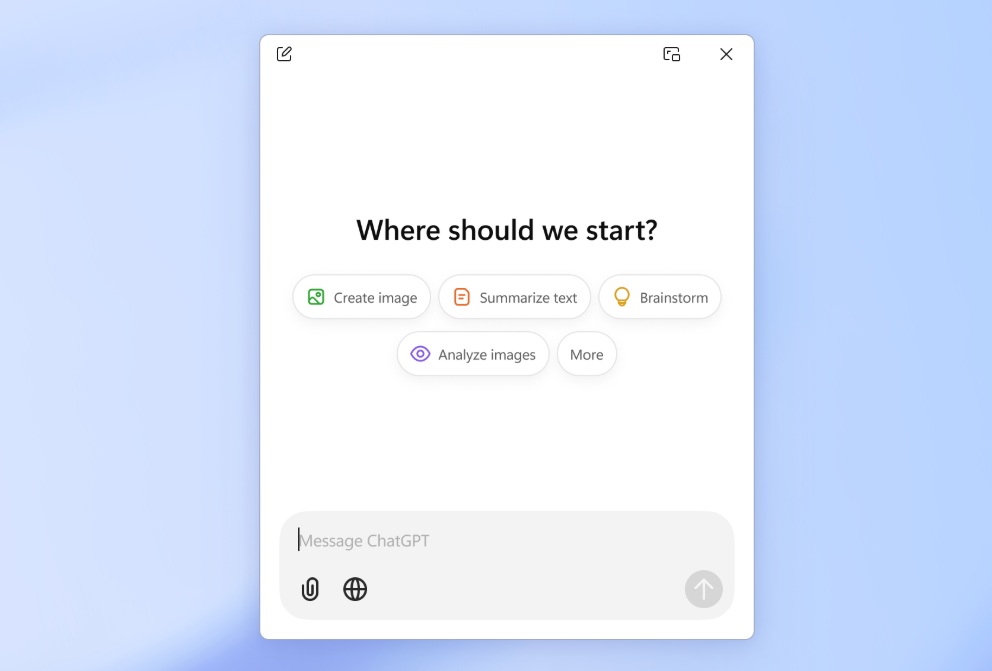
ChatGPT can not only be used in the web browser, the manufacturer Open AI also offers a Windows client for the AI application.
OpenAI
It was only recently announced that Open AI had finally released a Windows client for its chatbot ChatGPT, available for download from the Microsoft Store.
As ChatGPT is an open source project, there is a dedicated page on GitHub at github.com/lencx/ChatGPT. A desktop version for Windows is also available there.
It has the version number 1.1, dates from August 2023, does not require registration, but offers better answers to questions and more functions after registration: For example, access to internal and external GPTs (Generative Pre-trained Transformers). This also includes the Dall-E image generator.
Translating foreign-language texts or translating documents into other languages is another typical task in Office operations. It is also often necessary to revise the spelling, grammar, and style of important correspondence before it is sent out. In both cases, software from the German company DeepL can help.
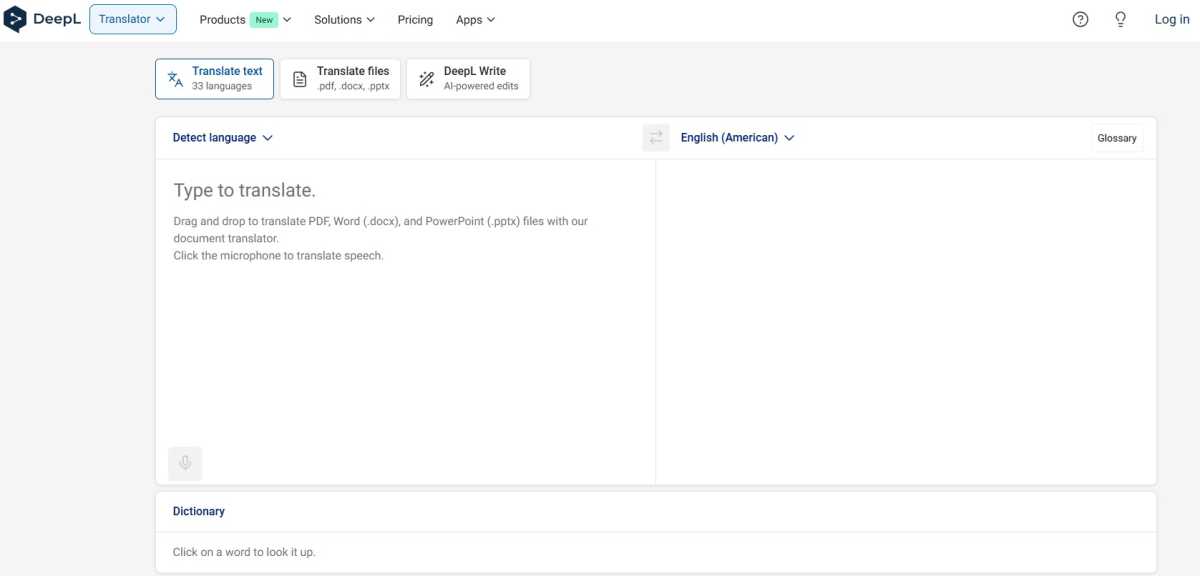
DeepL is currently regarded as the best translation program available. The manufacturer has now combined it with the writing aid Write and an OCR module in one app.
DeepL
A translator and the writing aid DeepL Write are available on the website. Both services are based on neural networks and are free of charge. However, translations are limited to 3,000 characters and users can upload a maximum of three documents per month for translation.
Without free registration, only texts up to 1,500 characters long can be translated. And DeepL uploads the entered texts to its servers and reserves the right to use them, together with the subsequent corrections by the user, to train its neural networks and algorithms.
In addition to the web version, DeepL offers apps for Windows, Android, and iOS as well as an extension for Google Chrome. In addition to the translator and DeepL Write, they include an image module that recognizes text in images such as screenshots, processes it using OCR and translates it straight away.
Google Gemini is only available on the web and for Android and iOS. Like ChatGPT, the chatbot can create both texts and images and research answers to questions in plain text.
Alternatives to ChatGPT
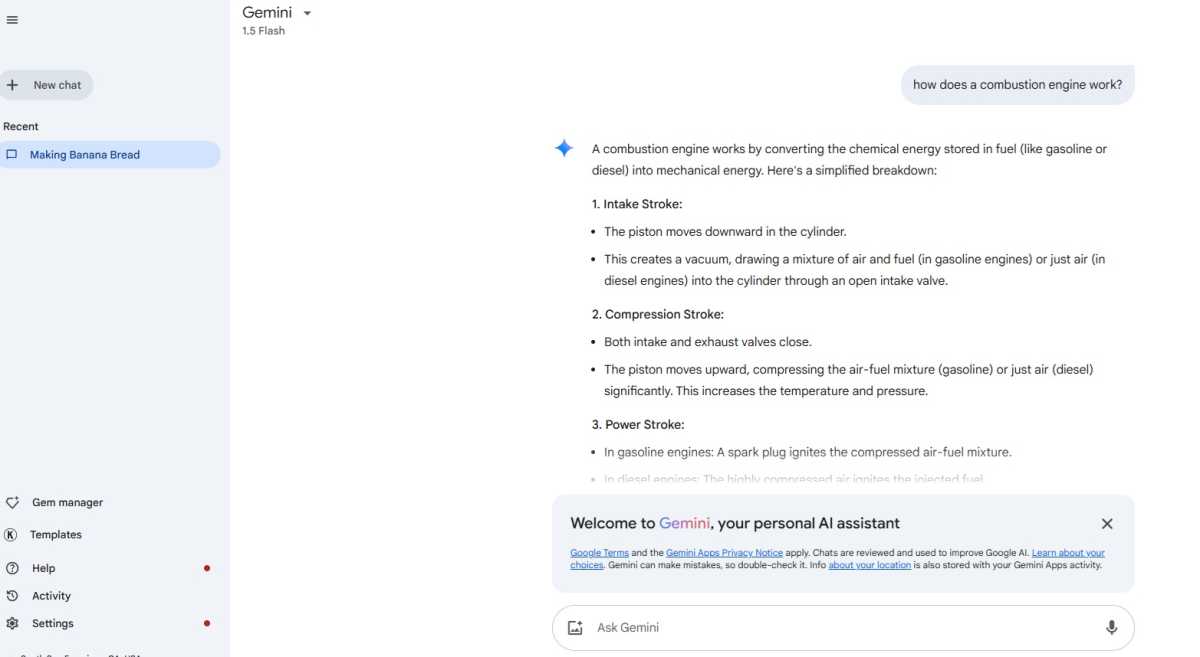
Google Gemini is only available on the web and for Android and iOS. Like ChatGPT, the chatbot can generate text and images and research answers to questions.
Foundry
ChatGPT is the best known, but by no means the only chatbot that works with AI. A whole range of companies have licensed the technology from Open AI and offer their own chatbot clients based on it.
One exception to this is Google, which has developed its own AI engine, Gemini.
On its website, the search engine giant offers a simple input screen where users can ask the AI questions and ask it to create a painting or photo with a predefined content. Gemini uses the Google image generator Imagen 3.
The Hamburg-based company Neuroflash, on the other hand, uses Open AI as the engine for its chatbot of the same name. The web-based app answers questions and writes texts for letters, blogs, CVs, and so on. The app can also create images and edit texts. It speaks several languages but, according to the manufacturer, has been specially trained with German texts. This gives it an edge over ChatGPT in German-speaking countries.
Writesonic also has a chatbot in its program, Chatsonic. It is also based on ChatGPT but, according to the manufacturer, also takes current results from Google searches into account when searching.
The special feature of the chatbot Claude from U.S. company Anthropic is that, according to the company founders, two former employees of Open AI, it should be secure and in line with human values.
Although Claude uses Open AI technology, it automatically warns of system-related weaknesses, possible hallucinations, and points out its own limitations. Claude is a pure chatbot without an image generator or functions for revising texts.
A new Windows app is available for download at claude.ai/download, while apps for Android and iOS have been available for some time.
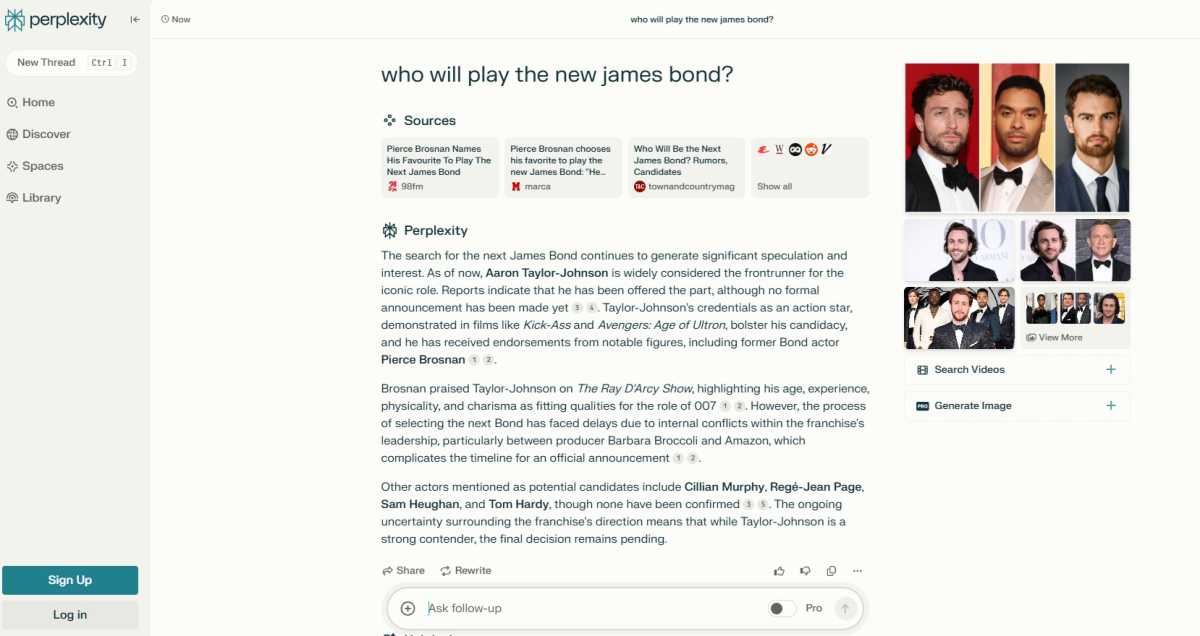
The American chatbot Perplexity not only answers questions, but also names the sources from which it obtains its information and processes it with the help of artificial intelligence.
Foundry
The American service Perplexity AI is a mixture of chatbot and search engine. Just like Microsoft’s Copilot app, it not only answers questions, but also displays the analyzed sources. Deutsche Telekom has been working with Perplexity for some time and offers its customers a free annual subscription to the Pro version as well as a chatbot in its Magenta app.
Finally, the chatbot Pi from Inflection AI uses its own large language model called Inflection-2. Its specialty is asking users specific questions in order to adapt to their interests, needs, and goals.
The software is more of a dialog partner than an information service or text generator. It is worth noting that Pi can also be reached via WhatsApp.
AI search and extensions
Closely related to universal chatbots are AI-supported search engines. It is often impossible to draw a clear line between the two product categories. For example, ChatGPT is just as suitable for writing texts as it is for searching the internet, and this applies even more to Google Gemini.
In general, AI searches should be able to handle more complex queries and recognize the user’s intentions better than conventional search engines.
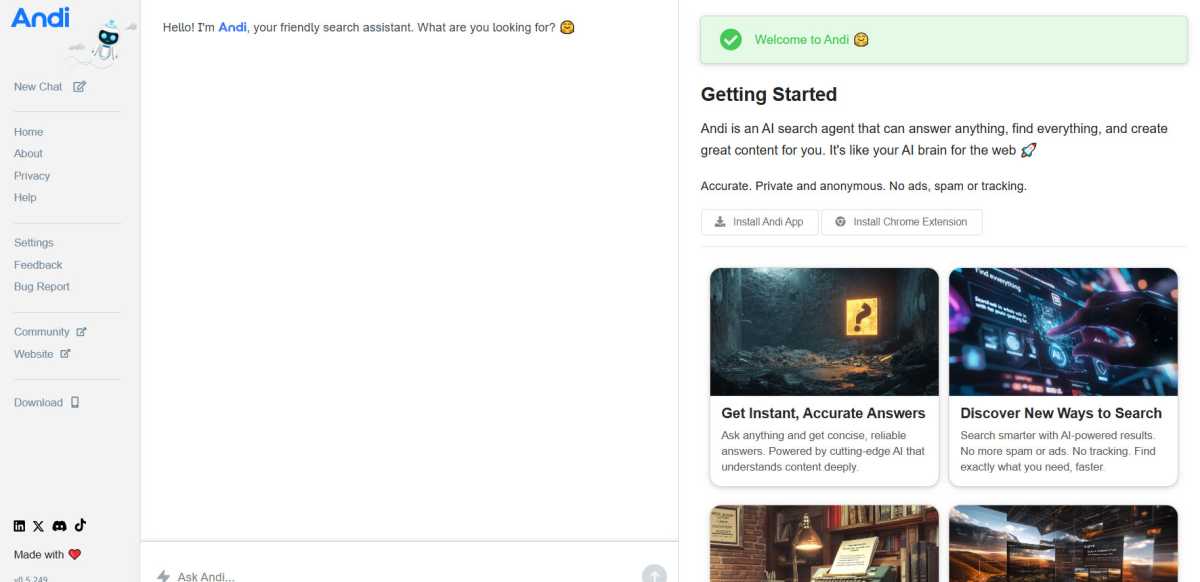
Andi is a hybrid between a search engine and an AI chatbot. The software quotes from online sources and displays the references so that the information can be easily double-checked.
IDG
The Andi search engine stands for Advanced Neural Data Intelligence and has its strengths when it comes to questions on topics from specialized fields for which it is supposed to be able to provide detailed answers.
The dialog appears in the middle of the search engine window — Andi itself only speaks English, but also understands other language input — and a selected source. In a sidebar, Andi links to other pages with relevant information and displays thumbnails.
Andi’s free app offers the option of summarizing the search results with a write-up function. This also works in German and is actually a big advantage over conventional searches.
The Duckduckgo search engine, on the other hand, offers an AI chat. After clicking on an icon above the search results, you first have to decide on an LLM; you can choose between GPT 4o, Claude 3, Llama 3.1, and Mixtral, then you can enter your question.
The AI Chat generates an answer text from the search results and memorizes both the question and the answer. The user can then follow up and request information on specific details.
Subtitles and live translations
Several manufacturers are currently working on translations and subtitles in videos and films. Live translations are useful in video conferences, for example, if the participants speak different languages.
Microsoft has already included a corresponding feature in Teams and uses AI functions for this. Other companies offer software that analyzes and translates the spoken language in a film and integrates it into the video in the form of subtitles and artificial voices generated by speech synthesis.
Microsoft has built a corresponding function for audio files called Live Captions into Windows 11 24H2, but it is only available on Copilot Plus PCs.
Translated subtitles for videos, on the other hand, are available free of charge on the web. Captions AI is a popular program that runs in the browser and translates foreign-language films into English, for example.
It can also create promotional videos, split long films into short clips, and add images, transitions, and sounds to videos. Captions AI is primarily aimed at the advertising industry, but is also useful for private videos. The brand new DeepL with DeepL Voice also allows real-time translations.
Live Caption is aimed at a completely different target group. The company has developed an app for Android and iOS that transcribes conversations in the neighborhood in real time and displays them as text on the smartphone — a valuable aid, especially for hearing-impaired people.
Graphics and image processing

AI functions: Cyberlink’s Photodirector can generate photos of people, import other faces, and place the result in front of a ready-made background.
IDG
Ever since a photo of the Pope in a white down coat began circulating in the media, it has become clear what possibilities lie in image editing using AI. The company Cyberlink has upgraded its Photodirector with AI functions for generating and editing images.
The user can remove details at the touch of a button, merge faces, or place people in front of a different background. The program is free to download, but some functions require “credits,” which can be purchased (100 credits for $18) or upgraded to the paid Photodirector 365.
Cyberlink also offers AI-supported tools for video and audio editing.
This articles is written by : Nermeen Nabil Khear Abdelmalak
All rights reserved to : USAGOLDMIES . www.usagoldmines.com
You can Enjoy surfing our website categories and read more content in many fields you may like .
Why USAGoldMines ?
USAGoldMines is a comprehensive website offering the latest in financial, crypto, and technical news. With specialized sections for each category, it provides readers with up-to-date market insights, investment trends, and technological advancements, making it a valuable resource for investors and enthusiasts in the fast-paced financial world.
